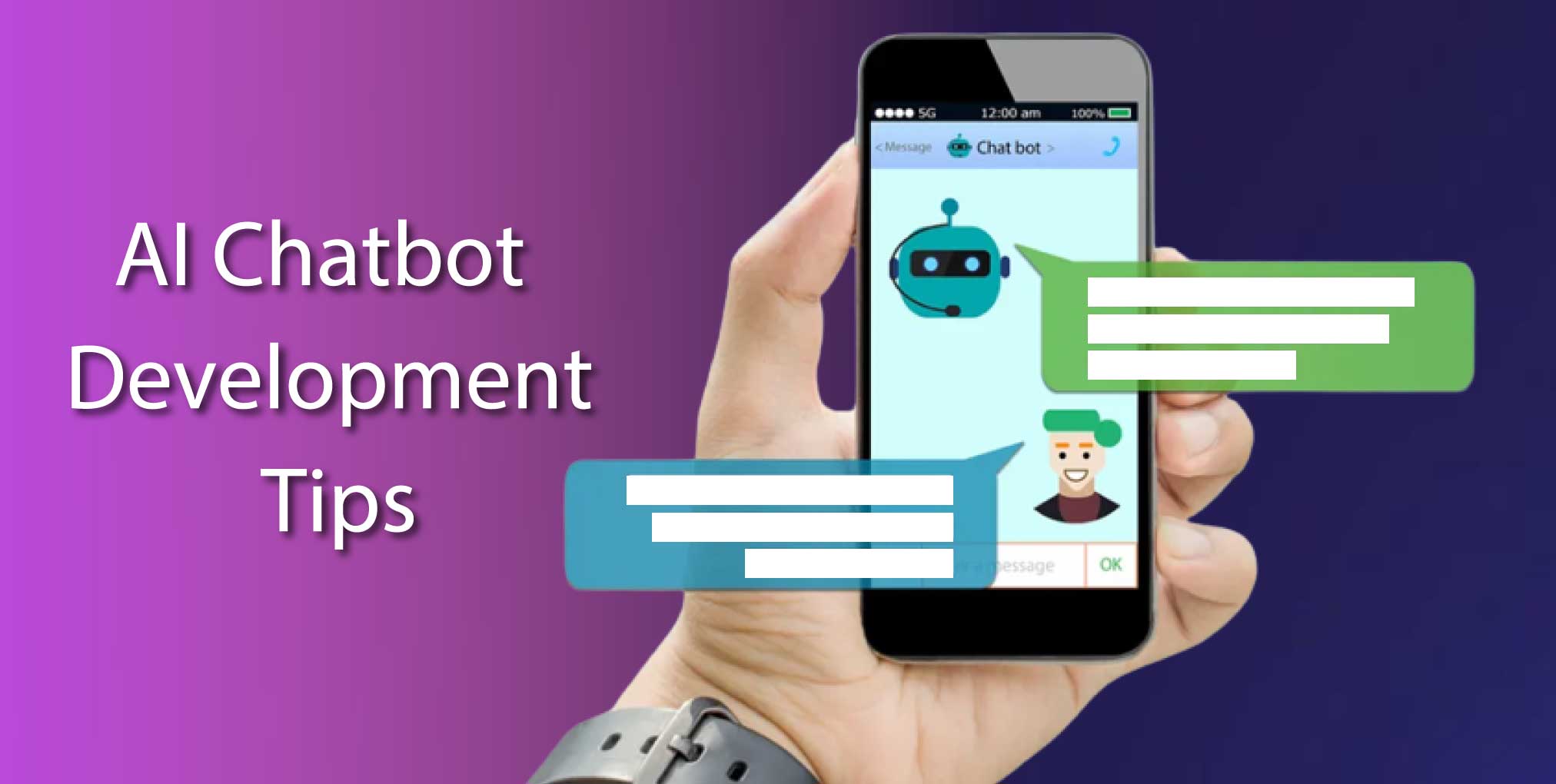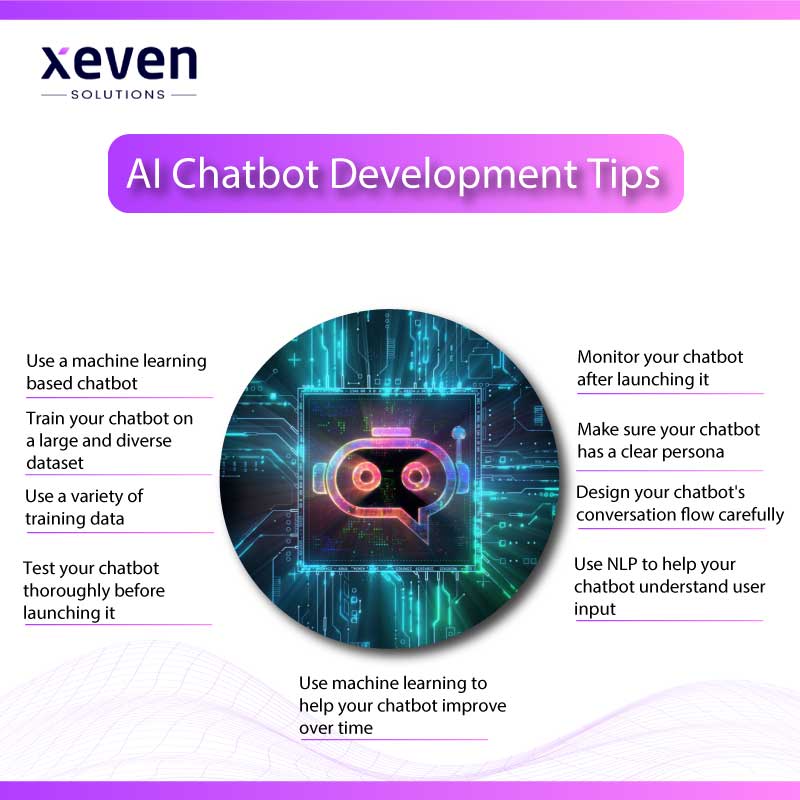

October 11, 2023
In today’s fast-paced digital world, where instant communication is key, chatbots have become indispensable business tools. These intelligent programs, powered by Artificial Intelligence (AI), are designed to simulate human-like conversations with users. Chatbots have evolved significantly over the years, and in 2023, they are more advanced and capable than ever.
This article will guide you through building an AI conversational chatbot in 2023, from identifying opportunities to the step-by-step development process. We will also discuss AI Chatbot Development tips and compare chatbots to live chat support to help you make informed decisions.
Chatbots are computer programs that can simulate conversations with humans. They are often used in customer service applications, where they can answer questions, provide support, and resolve issues. Chatbots can also be used for marketing, sales, education, and entertainment.
Chatbots are becoming increasingly popular as they offer several advantages over traditional methods of communication. For example, chatbots are available 24/7, they can handle multiple conversations simultaneously, and they can be customized to meet the specific needs of a business or organization.
A typical chatbot architecture consists of the following components:

Start by clearly defining the objectives of your chatbot. What problem will it solve? What use cases will it address? Understanding your goals is crucial for a successful chatbot project.
Select the appropriate tools and technologies for your chatbot development. Depending on your requirements, you may need NLP libraries, machine learning frameworks, and cloud services.
Create a conversational flowchart outlining possible interactions between the chatbot and users. Consider user intents, responses, and potential branching points in the conversation.
If you’re building an AI-powered chatbot, you’ll need a dataset to train your models. Collect and annotate diverse training data to improve the chatbot’s language understanding.
Start building the chatbot using your chosen technology stack. Implement the user interface, NLP components, dialog management, and integration points.
Thoroughly test your chatbot with real users to identify and address any issues or misunderstandings. Iterate on the design and functionality based on user feedback.
Once your chatbot is ready, deploy it to your chosen platform or channels. Monitor its performance and gather usage analytics to track its effectiveness.
Chatbot development doesn’t end with deployment. Continuously improve your chatbot by refining its responses, expanding its capabilities, and staying up-to-date with AI advancements.
Chatbots can be classified into two main types: rule-based and machine learning-based.
Rule-based chatbots are programmed to follow a set of rules to generate responses. These rules are typically based on keywords or phrases the chatbot detects in the user’s input. Rule-based chatbots are relatively easy to develop but can limit the types of conversations they can handle.
Machine learning-based chatbots are trained on a dataset of conversations. This dataset includes both the user’s input and the chatbot’s responses. Over time, the chatbot learns to generate more natural and engaging responses. Machine learning-based chatbots are more difficult to develop than rule-based chatbots, but they can handle a wider range of conversations.

Machine learning-based chatbots are designed to learn and adapt from data, making them highly versatile in handling various types of conversations. They use sophisticated algorithms and models, such as neural networks and deep learning, to analyze user input and generate responses. Unlike rule-based chatbots that rely on predefined rules, machine learning-based chatbots can understand and respond to a wide range of user queries, making them more effective at providing meaningful interactions and resolving user issues.
The effectiveness of a chatbot is directly proportional to the quantity and diversity of data it’s trained on. A larger dataset allows the chatbot to learn from a wider range of user interactions, improving its ability to comprehend and respond to user input. Diversity in the dataset ensures that the chatbot can handle conversations on different topics and in various conversational styles, making it adaptable to real-world scenarios and user preferences.
To create a well-rounded chatbot, it’s essential to incorporate various sources of training data. This includes different types of conversations, user interactions, and even diverse user personas. Using a variety of training data helps the chatbot learn how to respond to different questions and requests effectively, preventing it from becoming too specialized or limited in its capabilities.
Before deploying your chatbot to users, thorough testing is crucial. Testing helps identify and rectify any issues or bugs in the chatbot’s functionality and responses. Comprehensive testing may involve automated testing to check for functional accuracy and human testing to evaluate the chatbot’s performance from a user’s perspective. Addressing these issues before launch ensures a seamless user experience.
Post-launch monitoring is essential for continuously improving your chatbot. It involves tracking its interactions with users to identify areas where it can be enhanced. Monitoring helps you detect emerging issues, changing user behavior, and areas where user needs are not being adequately addressed. This ongoing feedback loop is invaluable for maintaining and evolving your chatbot’s performance.
Defining a clear persona for your chatbot involves determining its personality, tone, and communication style. Is it friendly or professional? Should it use formal language or adopt a casual tone? A well-defined persona ensures consistency in the chatbot’s interactions, making it easier for users to understand and connect with the chatbot.
Thoughtful conversation flow design is critical to creating a user-friendly experience. Consider how users will interact with the chatbot, the sequence of questions or prompts, and the information the chatbot needs to gather to provide the best possible assistance. A well-structured conversation flow ensures that interactions are logical, efficient, and meet user needs effectively.
NLP is a set of techniques that enables your chatbot to comprehend and interpret user input more effectively. It assists in identifying the intent behind a user’s query and extracting relevant information. Additionally, NLP helps the chatbot understand context, allowing it to generate contextually appropriate responses, resulting in more meaningful and helpful interactions.
Integrating machine learning into your chatbot allows it to evolve and improve continuously. Machine learning models can learn from user interactions and adapt to changing user needs. By analyzing user data and feedback, the chatbot can refine its responses and become more accurate and effective over time, ensuring a better user experience.
One of the most common and impactful uses of chatbots is in providing customer support. Chatbots can handle routine inquiries, troubleshoot issues, and even escalate complex problems to human agents when necessary. It ensures round-the-clock availability and faster response times.
In online shopping, chatbots can assist customers in finding products, making purchase decisions, tracking orders, and resolving any issues that may arise during the shopping process.
Chatbots can qualify leads and capture essential information from potential customers. They can engage with website visitors, answer questions, and guide prospects towards making informed decisions.
Chatbots can serve as knowledge repositories, providing users with information on various topics, including FAQs, product details, and company policies.
Virtual personal assistants, powered by chatbots, can help users with tasks such as setting reminders, scheduling appointments, and providing recommendations based on user preferences.

Xeven Solutions is one of the best AI chatbot development providers. They provide the best custom AI chatbots development services. But there is an age-old debate about Chatbot vs live chat which is better? For many years, businesses have been using live chat. They have very high trust in live chat. But the time has changed in the world of AI.
It’s essential to weigh the pros and cons. Chatbots offer 24/7 availability, multitasking capabilities, and customization but occasionally need more in-depth knowledge.
Live chat provides personalized support, handles diverse queries efficiently, and resolves issues swiftly. Still, it has limitations like restricted hours, simultaneous conversation limits, and higher costs, particularly with multiple agents.
In conclusion, building an AI conversational chatbot in 2023 offers numerous opportunities for businesses to enhance customer experiences, streamline operations, and stay competitive. You can create a chatbot that meets your objectives and user expectations by understanding the types of chatbots, their applications, and their architecture and following the step-by-step AI development process. Remember to leverage AI chatbot development tips and consider whether chatbots or live chat are better suited to your unique business requirements.